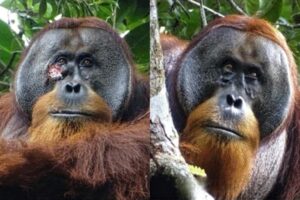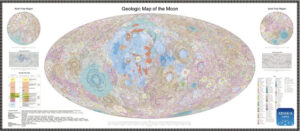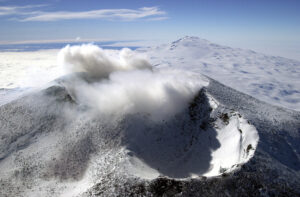It’s far from a new concept that humans are forcing all our living fellows — both plant and animal — to adapt. From fish becoming smaller to birds growing shorter wings to survive traffic, the race is on to change or die.
Evidence now exists that cities are often determining evolution more strongly than natural biomes.

A goldfinch at a feeder — intently surveyed. Photo: Shutterstock
One recent study involved 287 scientists across 160 cities in 26 countries. It was one of the largest studies ever of its kind, allowing researchers to coordinate the topic on a global scale.
The study, published last year, focused on white clover (Trifolium repens). The plant is native to Europe and West Asia but now proliferates all over the planet. Specifically, the group wanted to drill down on “parallel” evolution. Distinct from “convergent” evolution, parallel evolution occurs when one or more separate lineages take on traits that are as similar to each other as their ancestors were.
The researchers’ concept was to prove that cities influenced the clover’s evolution more than locality.

White clover, considered one of the most rapidly changing and widespread plant species on the planet. Photo: Wiki Commons
Urban jungle
Self-defense is a strong evolutionary trait in plants. Because they’re “sessile,” or stationary, local populations mainly exhibit the same methods of protecting themselves. White clover, for example, produces hydrogen cyanide to keep grazing animals at bay.
It turns out that cities are altering this trait.
The researchers sourced 110,019 white clover plants from 6,169 populations worldwide. Clover populations showed less similarity based on region and stronger similarity if they lived in a city — any city. Clover in cities didn’t have the same grazing animals to contend with, so was much less likely to manufacture hydrogen cyanide.
Sequencing 2,074 genomes from 26 cities, the researchers found that adaptive evolution was the driving force. “Our results demonstrate that urbanization leads to adaptation at a global scale,” the paper read.
“This is the most compelling evidence we have that we are altering the evolution of life in [cities],” University of Toronto biologist Rob Ness told ScienceAlert.
Evidence already exists that urban settings force faster adaptation than rural or wilderness areas. And we’re getting denser all the time. If we continue our current growth rate until 2030, the journal PNAS points out, urban sprawl will cover three times more of the earth than it did in 2000.
What does that promise? Profound changes for us all.

Feral pigeons on the Empire State Building, getting the lay of the land in 2008. Photo: Wiki Commons
Under duress, knowledge is power
Active influences like genetic engineering will combine with passive after-effects, like the changes in birds forced by traffic. Canadian zoologist Sarah Otto described those adaptations, among many others, in a 2018 article.
“The wing span of cliff swallows has evolved to be shorter near roads, with road-killed swallows having longer wings, consistent with selection for increased maneuverability in the face of traffic,” wrote Otto.
Birds in cities also fall prey to domestic cats at extreme rates. However, some historically migratory species are becoming sedentary because the ones attempting migration increasingly die in car collisions, Otto noted.
Otto also pointed out that fish have become smaller because we fish for the larger individuals in many species. As early as 2011, fish were 20 percent smaller, and their life cycles were 25 percent shorter on average, NewScientist reported.






